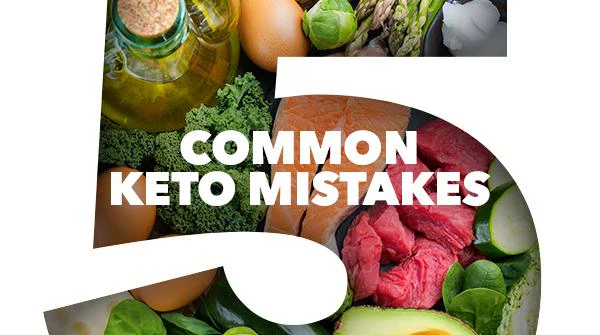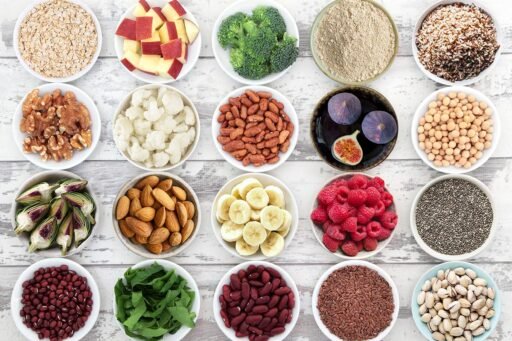The ketogenic (keto) diet has become a widely popular approach to weight loss and improved health. By drastically reducing carbohydrate intake and increasing fat consumption, the body enters a metabolic state known as ketosis, where it burns fat for fuel. While many people experience great success on the keto diet, it’s also easy to make mistakes that can derail progress or lead to unwanted side effects. In this article, we’ll explore some of the most common keto mistakes and provide practical tips on how to avoid them to ensure long-term success.
1. Not Eating Enough Fat
Mistake:
The keto diet is fundamentally a high-fat diet, but many beginners mistakenly reduce carbs and then fail to increase fat intake sufficiently. This can lead to energy deficits, hunger, and the inability to reach or maintain ketosis.
Why It Happens:
The idea of eating a lot of fat may feel counterintuitive, especially in a culture that often views fat as unhealthy. As a result, some people may inadvertently cut calories by eating too little fat, which can lead to fatigue, irritability, and hunger pangs.
How to Avoid It:
To thrive on keto, fat should make up about 70-75% of your daily caloric intake. Focus on healthy fat sources such as:
- Avocados
- Nuts and seeds
- Olive oil and coconut oil
- Fatty cuts of meat (like salmon, beef, and lamb)
- Full-fat dairy products
If you’re feeling hungry or fatigued, it’s a sign you may need to increase your fat intake. Aim to add healthy fats at every meal to help keep you satisfied and energized.
2. Not Monitoring Carb Intake Carefully
Mistake:
The keto diet is a low-carb diet, but some people overestimate the number of carbs they can eat and still stay in ketosis. A common mistake is not tracking carb intake or failing to account for hidden carbs in foods like sauces, dressings, and packaged products.
Why It Happens:
Because the keto diet typically limits total daily carbs to 20–50 grams (depending on individual factors), even small amounts of carbs can add up quickly and knock you out of ketosis. Foods like nuts, dairy, and low-carb vegetables contain small amounts of carbs that can add up throughout the day.
How to Avoid It:
Track your daily carb intake, especially in the early phases of the diet, to stay within your limit. Focus on low-carb, high-fiber vegetables like leafy greens, cucumbers, and zucchini to fill your plate without exceeding your carb allowance. Be mindful of hidden carbs in sauces, beverages, and snacks. Using a food tracking app can be a great way to stay on track.
3. Not Getting Enough Electrolytes
Mistake:
When starting the keto diet, many people experience symptoms commonly known as the “keto flu,” including headaches, fatigue, dizziness, and muscle cramps. One of the main reasons for these symptoms is an imbalance of electrolytes, particularly sodium, potassium, and magnesium.
Why It Happens:
When you reduce your carbohydrate intake, your body produces less insulin, and this causes your kidneys to excrete more sodium. This loss of sodium can lead to an imbalance in electrolytes, causing the aforementioned symptoms. Additionally, a reduction in carbs can decrease the body’s ability to retain water, further exacerbating electrolyte imbalances.
How to Avoid It:
To prevent or alleviate keto flu, make sure you’re getting enough electrolytes by:
- Sodium: Add more salt to your food or drink broth (preferably bone broth) to boost sodium intake.
- Potassium: Eat potassium-rich foods like avocados, spinach, and mushrooms.
- Magnesium: Consume magnesium-rich foods such as leafy greens, almonds, and pumpkin seeds, or consider taking a magnesium supplement.
Staying hydrated and consuming enough electrolytes will help your body adjust to the diet and minimize uncomfortable symptoms.
4. Focusing Too Much on Protein
Mistake:
While protein is an essential nutrient, over-consuming protein can be detrimental to your progress on the keto diet. Some people mistakenly think that eating as much protein as possible is key to success.
Why It Happens:
Unlike fat, protein doesn’t trigger ketosis. In fact, if you eat too much protein, your body may convert excess protein into glucose through a process called gluconeogenesis. This can raise your blood sugar levels and interfere with ketosis.
How to Avoid It:
Moderate your protein intake so it makes up about 20-25% of your total daily calories. A general guideline is to eat 0.6–1 gram of protein per pound of lean body mass, depending on your activity level and goals. Choose high-quality protein sources like grass-fed beef, pastured eggs, poultry, and fatty fish.
5. Relying on Processed “Keto-Friendly” Foods
Mistake:
As keto has become more mainstream, a variety of pre-packaged “keto-friendly” snacks and processed foods have flooded the market. While these products may be low in carbs, they often contain unhealthy fats, artificial sweeteners, and preservatives that can interfere with long-term health and weight loss.
Why It Happens:
The convenience of pre-packaged keto products can be tempting, especially for beginners who are looking for easy snack options or meal replacements. However, many of these products lack essential nutrients and can contribute to poor eating habits.
How to Avoid It:
Focus on whole, nutrient-dense foods like non-starchy vegetables, healthy fats, and high-quality proteins. Make your meals from scratch as often as possible, so you know exactly what ingredients you’re consuming. If you do buy keto-friendly products, read labels carefully to ensure they contain whole, clean ingredients and avoid those loaded with artificial sweeteners, preservatives, or inflammatory oils.
6. Not Getting Enough Fiber
Mistake:
A common mistake on the keto diet is not consuming enough fiber. With the elimination of many high-carb foods like grains and fruits, it’s easy to fall short of the recommended daily fiber intake.
Why It Happens:
While the keto diet is low in carbs, fiber is a type of carbohydrate that doesn’t raise blood sugar and is essential for digestive health. Not getting enough fiber can lead to constipation and other digestive issues, which are common complaints among new keto dieters.
How to Avoid It:
Make sure to include fiber-rich, low-carb vegetables in your meals. Some excellent keto-friendly sources of fiber include:
- Leafy greens (spinach, kale, arugula)
- Broccoli
- Cauliflower
- Avocados
- Chia seeds and flaxseeds
- Coconut
You can also consider adding a fiber supplement, like psyllium husk, if you are still having trouble reaching your fiber goals.
7. Overlooking the Importance of Sleep and Stress Management
Mistake:
While diet is a huge factor in success on the keto diet, sleep and stress levels can also play a major role. Chronic stress and poor sleep can affect hormone levels (such as cortisol and insulin) and can undermine weight loss or energy levels, making it harder to stay in ketosis.
Why It Happens:
The intense focus on food and macronutrient intake can sometimes lead people to neglect other areas of health that are just as important, like quality sleep and managing stress.
How to Avoid It:
Prioritize sleep and stress management techniques to help optimize your keto results. Aim for 7-9 hours of sleep each night, and incorporate relaxation strategies like meditation, yoga, or deep breathing exercises to keep your stress levels in check.
8. Expecting Instant Results
Mistake:
Many people expect quick and dramatic results when starting the keto diet, but weight loss and other health improvements can take time. Patience is key, as the body needs time to adapt to burning fat for fuel instead of glucose.
Why It Happens:
Keto’s initial promise of rapid weight loss can create unrealistic expectations. Many people may lose weight quickly in the first few weeks, but these early losses may be due to water weight and glycogen depletion rather than true fat loss.
How to Avoid It:
Set realistic expectations and give your body time to adjust. Understand that long-term success on keto requires consistency, and while early weight loss may slow down, fat loss continues at a steady pace. Focus on the process, not just the scale, and celebrate non-scale victories like improved energy levels and mental clarity.
Conclusion
The keto diet can be an effective and transformative approach to weight loss and improved health, but it’s important to avoid common pitfalls. By eating enough fat, tracking carbs carefully, replenishing electrolytes, and staying mindful of your protein intake, you can set yourself up for long-term success. Remember to focus on whole, nutrient-dense foods and take a holistic approach that includes proper sleep, stress management, and patience. With these strategies in place, you’ll be well on your way to reaching your keto goals and experiencing the many benefits this diet has to offer.































